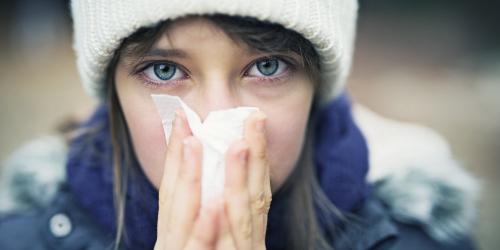According to the French Society of Allergy, only 100,000 desensitization cures are performed approximately every year in France.
Given the number of people suffering today from allergies, twenty times more patients should use it. Despite its good results, specific immunotherapy remains unknown. Yet it is the only treatment that allows the immune system to become more tolerant of allergens, thus curbing the evolution of the disease.
Allergies and desensitization: who is concerned?
Desensitization is not considered for a simple runny nose. It is a long-term treatment for those for whom the allergy poses a real problem or is likely to cause a severe reaction, such as anaphylactic shock. The treatment is not applicable to polyallergics .
To achieve good efficacy, only one or two allergens must be targeted . It is therefore essential beforehand that the allergy is confirmed by an allergist and that the antigens in question are diagnosed by means of skin tests (prick tests).
The latter, not painful, consist of injecting into the skin very small doses of allergens (mites, cat, different pollens, egg proteins, etc ...) to examine the reaction developed by the body. These tests can be performed at any age, from birth, but desensitization is not possible in a child under 5 years.
Against pollens and mites, big progress has been made
Desensitization has a bad reputation because many people still imagine that it requires repetitive stings. To desensitize against pollens and mites, this is no longer the case. Gradually increasing doses of allergens are now administered by the mouth, sublingually . These are drops prepared in laboratories and kept cool that we put down every day under the tongue.
For grass pollen and mites, there are even now sublingual tablets that make the treatment even simpler and more comfortable. Unlike drops, they do not need to be refrigerated. But beware, the protocol is long. For pollen, for example, treatment should begin at least 3 months before the allergen exposure period and continue until they disappear into the air. And it must be renewed in the same way for 3 to 5 years. If we stop en route, efficiency is not at the rendezvous.
Against bee venom, wasp ... A lighter protocol
Allergy to bee stings, bees, horseflies and hornets should be taken seriously because its consequences can be serious: important edema , anaphylactic shock ... The first reaction is rarely fatal, but the symptoms intensify over time. stings. Desensitization is therefore often required in people who may be exposed to it often.
The treatment is still done in the hospital by injection but it only requires a few hours of hospitalization, not 3 days as before. Small doses of venom are injected every 30 minutes under close supervision for the next four hours, in case the reaction is too strong. Reminder injections are required 15 days later, then once a month for five years.
Food allergy: a patch in perspective
"The more we keep a child on a total eviction diet, the more likely he is to remain allergic for a long time," says Dr. Isabelle Bossé, president of the French Syndicate of Allergists. Desensitization is therefore practiced in the hospital by ingestion of increasing doses, peanut for example. But this treatment is very delicate and requires close supervision.
A promising alternative is about to appear: a patch that delivers 250 micrograms of peanut through the skin. Tested for several years, its daily application seems to increase by ten the tolerance of children to this allergen. This patch is expected to arrive on the market in 2018. The laboratory that develops it (DBV) targets other food allergies, such as cow's milk.




